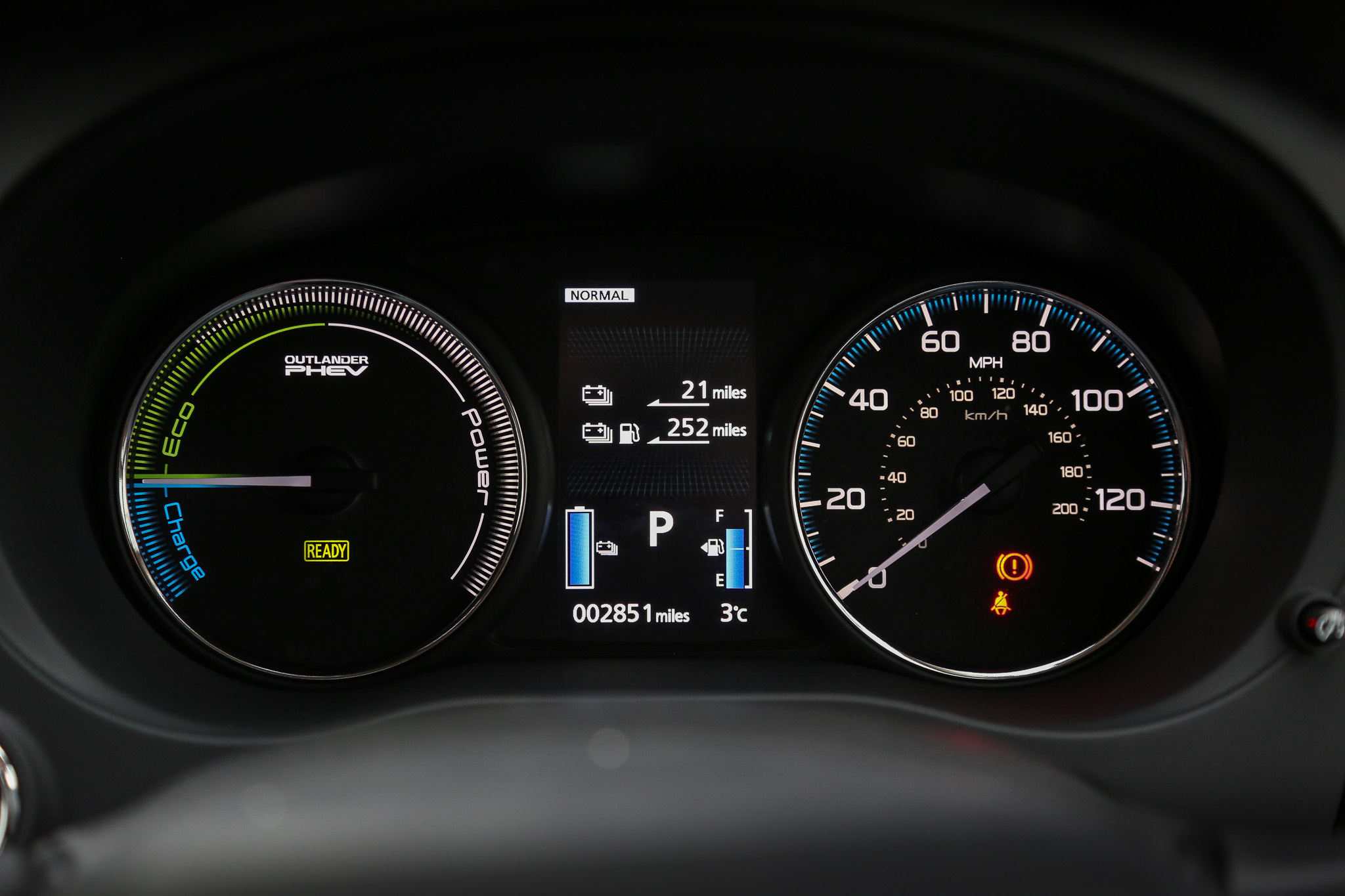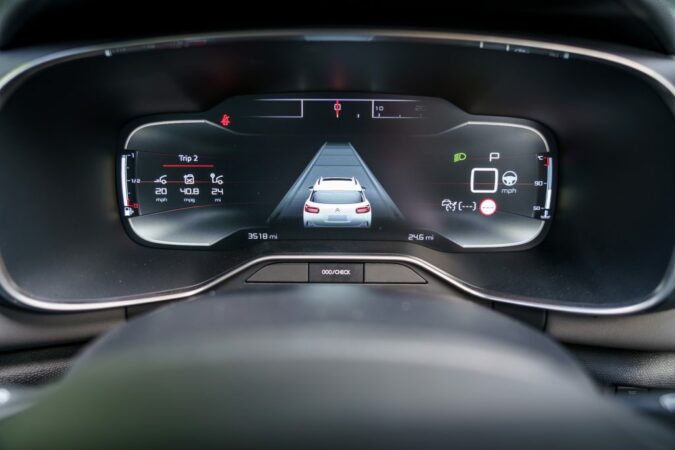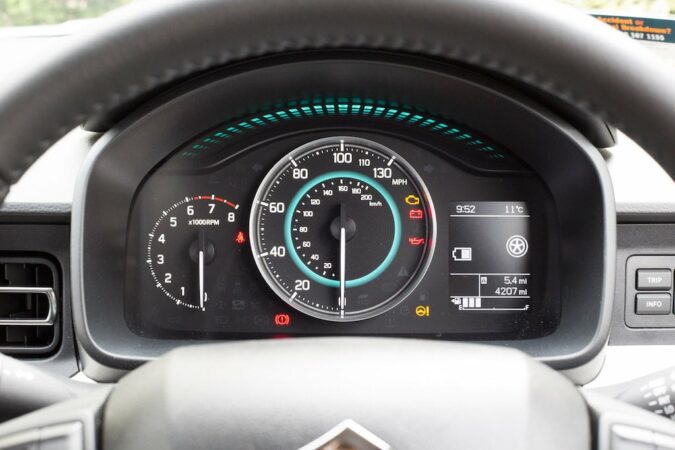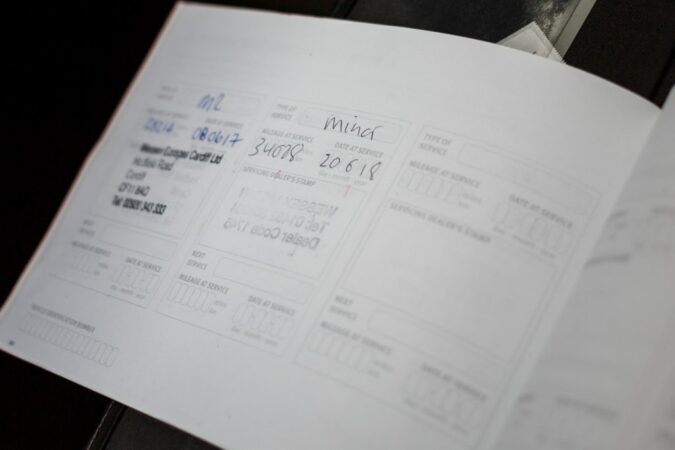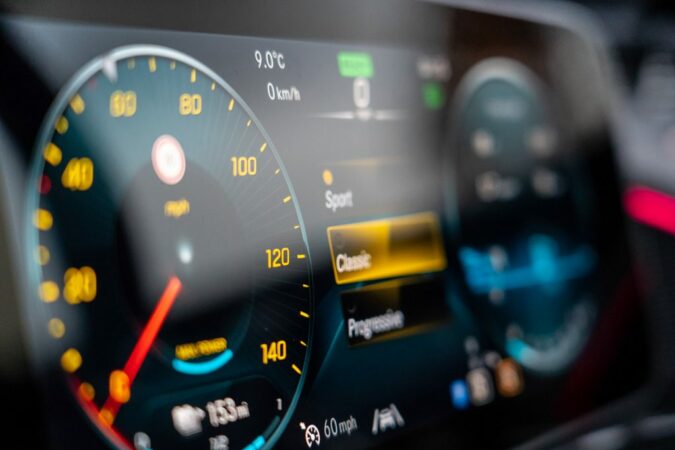Owning and driving a car means you have to maintain it and keep an eye on key components. The odometer reading is a crucial metric to keep an eye on because it tells you how many miles a car has driven over its lifetime. An odometer needs to be accurate and you should be concerned with knowing the age and mileage of your car.
Reading an odometer is quite simple. But more recent cars come with lots of bells and whistles, including a digital gauge cluster. This makes it occasionally difficult to figure out how to obtain the proper information. We’ve done the legwork to figure out where the odometer is located in your car and how to read it properly.
Also keep in mind that If your automobile has an analog odometer, it can be broken into and the numbers reversed. If it has a digital odometer, the car’s computer can be hacked. In order to fight this, the Federal Truth in Mileage Act was introduced in 1986.
Every vehicle’s mileage is now recorded in a database and updated each time a car is sold. The risk of erroneous odometer readings exists whether you have an older automobile with a mechanical odometer or a modern car with a digital odometer.
Hence we will discuss everything related to the odometer of your car in this article. We will cover the basics including reading an odometer, odometer rollback, odometer fraud as well as odometer disclosure statements.
- Odometer And Types
- Odometer Fraud
- Odometer Rollback
- Checking For Odometer Rollback
- Mileage Exempt On Title
- Final Conclusion
- FAQs
Odometer
The odometer is a device used to determine how far a vehicle has traveled. A mechanical, electrical, or electromechanical device may be used in your car depending on its age and make. It is positioned on the vehicle’s dashboard as usual.
Digital odometers in modern cars receive their recorded mileage data from the vehicle’s electronic control unit (electronic control unit – aka a car ECU). It is important for you to keep a track of how old your car is and how many miles you’ve driven.
First and foremost, it provides you with crucial information. Also, you always use mileage to gauge a car’s general condition. Furthermore, when it comes to buying a used car (as opposed to should I buy a new car, instead), the odometer reading is crucial in making the decision.
The odometer is not to be confused with a trip meter. The trip meter is also installed in your car but for a different purpose. It is widely used for practical purposes. Drivers use it to keep track of the precise lengths they travel on any given journey.
Anytime you want, you can reset the trip meter while the odometer keeps running as long as the car runs. Since the introduction of motor cars, mechanical odometers have recorded the distance they traveled.
Despite being a disappearing breed, they are really cool because they are so straightforward. A gear train with an incredible gear ratio is all that makes up a mechanical odometer.
Digital odometers are replacing analog ones because they offer more functionality at a lower cost. But we can all agree that they aren’t quite as cool. We will first discuss the internal functioning of a mechanical odometer before moving on to a discussion of digital odometers.
Mechanical Odometers
The flexible cable constructed from a tightly wound spring is used to turn mechanical odometers. Typically, a rubber housing and protective metal tube surround the cable as it spins. The cable is turned by a gear that engages the transmission’s output shaft.
The cable winds up to the instrument panel and is attached to the odometer’s input shaft there.
The 1690:1 gear reduction on this odometer is accomplished by a chain of three worm gears. The first worm is driven by the input shaft, and it turns a gear. Only one gear tooth is turned for each complete worm rotation. This gear then spins a different worm, which turns a different gear, which turns the final worm.
This continues until the final gear, which is connected to the tenth-of-a-mile indication, is turned. Additionally, you can see that rewinding is possible with mechanical odometers. The car’s odometer can truly move backward when you drive it in reverse; all it takes is a different gear train.
Digital Odometers
A digital odometer is found in most modern vehicles. A magnetic sensor that counts the pulses as each tooth of the toothed wheel passes by is used in these units. It works in tandem with a toothed wheel mounted to the transmission’s output. Some automobiles employ an optical pickup and a slotted wheel, much like a computer mouse.
The computer in the car tracks the distance it travels with each pulse, and uses this information to update the odometer reading. The distance signal is delivered from the engine control unit (ECU) to the dashboard by a single-wire communications bus rather than a spinning cable, along with a lot of other data.
Odometer Fraud
According to the National Highway Transportation and Safety Administration, odometer fraud is the act of disconnecting, resetting, or otherwise tampering with a motor vehicle’s odometer with the intention of changing the mileage displayed. For more insight, check out our overview of how to reset the miles on a car.
Odometer tampering is a serious crime that costs American consumers $1 billion every year. It’s estimated that around 450,000 vehicles with inaccurate odometers are sold each year.
Almost 2 million cars on the road today may have phony odometer readings, claims recent research. The number is 7% higher than it was a year ago. The yearly analysis was conducted by Carfax, a company that provides vehicle history reports.
According to Carfax, there are variations in risk in each state. Texas had a 15% increase in odometer tampering while Arizona and Florida saw a 12% increase. The number in California, which has the most cars in any state, increased by 2% in the last 12 months.
The temptation to try to boost a used automobile’s value might be increasing when used car prices are falling. Additionally, Carfax notes that “removing thousands of miles from a car’s history has never been easier – or cheaper — with the majority of today’s vehicles employing a digital odometer.”
You could lose money if you buy a used car with a faulty odometer reading. When the true odometer reading is revealed, according to Carfax, “consumers lose an average of $4,000 in value.” To learn more, our guide on the fair market value of a car and the actual cash value of my car might prove insightful.
But there are other expenses, such as higher maintenance costs for components that have experienced greater wear than anticipated. Also, it results in higher insurance premiums after the fraud is discovered.
Tools For Altering Odometer Reading
One of the most crucial elements to consider when assessing an automobile’s general condition is its mileage. In order to attract potential purchasers, people are consequently looking for ways to put fictitious mileage on a vehicle.
To make exact readings impossible, people use a variety of methods including Odometer correction tools and mileage blockers. An odometer rollback device is the most widely used tool. It simply rolls back mileage figures after connecting to an OBD port.
The fact remains, however, that mileage from control units cannot be removed. Therefore, everyone may find it with ease. In contrast to odometer rollback devices, mileage blockers simply stop the recording of mileage from all ECUs.
They alter the data in an unrestricted manner. This device is not made for a public road; rather, it is made for testing and tuning. Therefore, using mileage blockers is lawful, unless you use the device to deceive potential buyers by giving false mileage readings.
Odometer Rollback
Even though odometer rollback may appear to be extinct, it nonetheless happens frequently. When someone tampers with a car’s odometer to make it read fewer miles than it actually does, it’s known as an “odometer rollback.”
A faulty odometer reading could indicate that the condition of the car you’re buying isn’t as excellent as you think. This could necessitate expensive maintenance and repairs that you’re not equipped to handle.
Here is the information you need to understand odometer rollbacks, how they may affect you, and how to recognize this fraudulent practice…
It used to be simpler to perform odometer rollbacks with analog displays. However, con artists can still pull it off with more modern digital odometers. With the proper techniques and tools, the process might actually be rather simple to complete. A rolled-back odometer is a sign that the car might not be as dependable as the seller claims.
Knowing the car’s mileage can help you determine how long you can use it as well as what maintenance and repairs it may require. The premium you pay for the car if you purchase one with a rolled-back odometer is your first loss. Because the car looks to be in better condition than it actually is.
As soon as you become the owner, you can also find yourself with greater maintenance and repair expenses than you had anticipated. Also, the car might even break down earlier than you had intended.
Odometer Reading: Checking For Odometer Rollback
In a mechanical odometer, rolling the digit gears back is easier. It would require pulling the instrument cluster off the dashboard, dismantling it, and reassembling it. As there may be numerous apparent indicators of manipulation, this is easily discovered. The procedure is very distinct for digital odometers.
In most cases, this entails using a diagnostic port to connect to the vehicle. This enables access to the odometer software and then the program and its data storage are manipulated.
It’s not difficult to find digital equipment that makes it possible to change odometer readings. Some of them are expert equipment utilized by authorized repair facilities for legitimate purposes.
There are methods by which you can recognize an odometer rollback scam and keep yourself from falling for it. Start by giving the car a comprehensive examination on your own. Minimal mileage but significant wear on the seats, pedals, tires, and steering wheel may indicate that something is wrong.
Instead, consider the following precautions and steps to prevent buying a car with a rolled-back odometer:
1. Vehicle History Report
An official document called a vehicle history report contains a wealth of useful details on the past of the vehicle, including reports of any accidents. This report is updated with information about each inspection and repair performed on a vehicle by accredited businesses. It also includes the vehicle’s current odometer reading.
Websites like CARFAX and AutoCheck offer copies of vehicle history reports for a modest price. This report contains information on the vehicle’s past owners, collisions, title branding, maintenance records, and more. So, if you need to learn how to find the owner of a car, this is one technique.
It often also includes odometer readings at various times over the course of the vehicle’s life. The odometer has probably been tampered with if the most recent reading is higher than what is displayed. It’s not too difficult to obtain this report. The vehicle identification number or VIN is used for this process.
It is a special code that can be found on the vehicle itself as well as in the related paperwork. Next, you can perform an online VIN check using that number. If you need more references, check out our guide on how to find a license plate number by VIN, how to check a car warranty by VIN, as well as the VIN etching process.
The Vehicle History Report is one of the most trustworthy ways to check for odometer rollback. Unlike the title, which may be physically changed, it is an electronic document stored in secure databases. An up-to-date vehicle history report will also assist you in avoiding purchasing a vehicle with a forged title.
2. Properly Check The Vehicle Documents
Request the original title for the car, which will reveal the mileage at the time the title was issued. Ask for the actual document, not a replica; con artists occasionally fabricate paperwork to show false data.
In order to discover the mileage information, you can also search the glove box for maintenance and repair records. Ask the seller for any records if none are present. For more info, our detailed explainer on how to check the mileage of a car might help.
Additionally, the car title contains the odometer reading. Scammers may also fabricate the vehicle title in order to conceal the car’s actual mileage in addition to changing the odometer.
When buying a car, if the seller is hesitant to provide you with the vehicle’s title, that could be cause for concern. Prior to making a purchase, make sure you demand to view the original paperwork.
Pay particular attention to the odometer reading on the document because you can be offered a title that is forged or altered. Look to see if the text is clear and legible on a clear background or if it is blurred and difficult to read.
3. Consult A Mechanic And Get The Vehicle Inspected
Ask a qualified mechanic to examine the car’s internal parts if you think the mileage isn’t accurate. Although mileage is logged on both devices, con artists may overlook the vehicle control module when resetting the odometer.
The odometer is independent of the control module and changing one need not always have an effect on the other. Examining the control module and comparing it to the odometer is one of the surefire ways to spot odometer fraud. Ask a mechanic to obtain the module’s data so you may compare the mileage.
You can always keep an eye out for an odometer discrepancy on your own. However, it’s always a good idea to have a mechanic perform an examination before purchasing a used car. A pre-purchase inspection usually costs between $100 and $200.
But if the technician finds signs of tampering, it might be wise to back out and it would save you much more.
Mileage Exempt On Title
Exempt mileage is a subject that frequently confuses potential clients. Most classic automobile dealerships show titles that indicate the mileage is “exempt” for tax purposes. When looking for an automobile, this phrase could appear like a red flag if you’ve never heard of it. But it’s actually not.
Odometer Reading: The Federal Odometer Tampering Law
Nearly all vehicles sold or transferred after their tenth year of production are exempt from the miles requirement in several jurisdictions. When the Federal Odometer Act (FOA) was passed in 1972, everything began. Congress enacted the FOA to safeguard customers from odometer fraud, which has existed since the invention of odometers.
The rationale behind this rule is that one of the key elements people consider when evaluating a vehicle’s reliability is its mileage. The buyer can end up making a choice that results in unforeseen maintenance and repair costs if the mileage has been tampered with.
According to the FOA, whenever a vehicle is transferred, the seller is required to produce a written declaration that details the mileage of the vehicle as of the transfer date.
Additionally, the seller must provide information such as whether the car has exceeded its mechanical limit of 99,999 miles (odometer rolled over). It should also specify whether it is known that the reading is inaccurate owing to a malfunction, among other things.
To comply with the FOA, most states have established specific legislation. These exempt vehicles that are 10 years or older from needing their mileage disclosed at the time of sale. In this case, the mileage is noted on the title as “exempt” when a car is sold.
This merely indicates that the vehicle has been in existence for too long to reliably verify its mileage. However, if the seller does not mark “exempt” next to it, it is not considered exempt. In that case, the mileage disclosure on the odometer disclosure form must be true.
Otherwise, it is a violation of the odometer law, as well as the state’s deceptive trade practices act.
Odometer Reading: Revised Odometer Exemption Law
A twenty-year exemption eligibility gradually started replacing the ten-year exemption eligibility for declaring odometer mileage in 2021. Odometer declarations will now be necessary for any automobiles that are less than 20 years old when ownership is transferred.
Vehicles with model years 2011 and later are subject to the new twenty-year exemption eligibility rules. The time frame will start twenty years after the automobile was manufactured.
The twenty-year exemption applies to vehicles that are less than twenty years old and the manufacture date is 2011 or later. Both dealers and private sellers must report the actual mileage on the title of the vehicle during an ownership transfer. The new regulations won’t apply to any models of cars made in 2010 or earlier.
Odometer Disclosure Statement
An odometer disclosure statement is only a declaration of the mileage of a vehicle, as shown by its odometer, and whether or not the reading is accurate. You’ve already completed a general odometer disclosure statement if you’ve ever sold a car.
Odometer disclosure is mandated by law, with the exception of particular automobiles, and violating it can lead to fines and even jail time. The odometer disclosure statement is not required for all vehicles, though.
For instance, California does not mandate the disclosure of mileage on automobiles that are 10 years or older. A manufacturer selling a car directly to an agency, transferring a new vehicle before its first retail sale, and commercial vehicles with weight restrictions are also exempt.
Odometer Reading: In Conclusion…
All things considered, an odometer is one of a car’s most crucial components. Not because it’s necessary to drive the vehicle but rather because it monitors the health of the car generally. Simply by looking at the figure, you can determine the age of the car and how frequently it has been driven.
In order to maintain the best level of quality for your vehicle, it is crucial to make sure your odometer is correct and has not been tampered with. One of the most typical frauds involving used cars is odometer rollback. Even while it can be challenging to find out, it’s not impossible.
You must tick the box to make a declaration on the disclosure statement if you are aware of a discrepancy in the reading. Some vehicles could also be exempt from the requirement for odometer disclosure statements.
Vehicles older than 10 years, with model years prior to 2011, are excluded. A vehicle made after 2011 must be 20 years old to be excluded from odometer disclosure. Odometer rollback fraud is still a thing. Thus it’s imperative for car purchasers to exercise caution when purchasing a used car.
To look for indications of odometer rollbacks and other types of fraud, be sure to carefully examine the vehicle, its history, and any accompanying paperwork. If necessary, get the vehicle inspection by a mechanic as well.
FAQs On Odometer Reading
What Is An Odometer
An odometer or odograph is used to measure the distance covered by a vehicle, such as a bicycle or a car. The device could be either mechanical, electrical, or a combination of the two (electromechanical). The term mileometer or milometer may be used to denote it in nations that use imperial units or US customary units.
What Is Odometer Reading
The odometer reading shows how many miles the car has been driven. It is one of the most important elements in establishing a vehicle’s value. A car with a lot of miles on it is worth less than one with fewer miles on it. Every time you are needed to record this number, it is crucial that you do it accurately.
How To Reset Miles On A Car
The odometer on your car cannot and should not be changed or tampered with especially if you plan to mislead prospective buyers or sellers about the vehicle’s true condition. When a car is appraised to determine its sale value, one of the main criteria considered is its mileage. Hence this figure should be legitimate and most accurate as possible.
What Does An Odometer Measure
The distance traveled by a vehicle is measured by an odometer. Typically, the odometer is located on the dashboard of the car. There are mechanical and digital odometers. A digit is represented by each cog on a mechanical odometer. A driving mechanism and cable turn the cogs in response to the wheels turning.
Does Replacing The Engine Reset Mileage
No, changing your engine does not reset your car’s mileage. The front wheel hub of your car serves as the vehicle’s odometer instead of the engine. Your engine modifications won’t have any impact on the odometer reading at all. Odometer changes can only be performed by unlawful tinkering.
How To Rollback A Digital Odometer
The technique for rolling back the odometer had been modified to account for technological advancements. By taking out the car’s circuit board, one can change the readout on a digital odometer. Fraudulent people can also tamper with these devices using rollback equipment in addition to that method.
What Does Exempt Miles Mean
In some cases, the mileage is noted on the title as exempt when a car is sold. This merely indicates that the vehicle has been in existence for too long to reliably verify its mileage. Also, sellers of classic cars with astonishingly low mileage will occasionally get a statement notarized. This is to verify the miles in order to keep them printed on the title.

